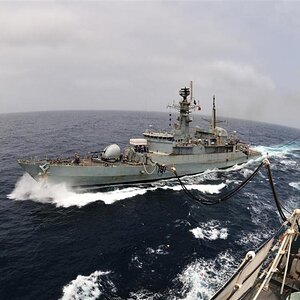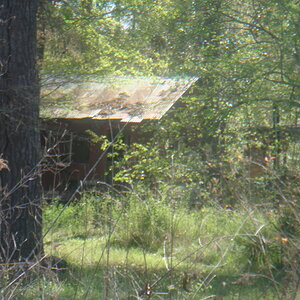PixelRabbit
A naughty little bunny...
- Joined
- Nov 28, 2011
- Messages
- 6,593
- Reaction score
- 3,719
- Location
- Ontario
- Can others edit my Photos
- Photos NOT OK to edit
First I had no clue where to put this but I have faith that our dear moderators will move it if there is a better place for it 
As many of you know Mr. Rabbit works at the nuclear station. Over the years he has worked on the face of shut down reactors (still hot obviously but not "as" hot) and they use a lot of cameras to remotely do the work. Recently he has changed positions and is now in fuel handling on the live reactors and spends time in very less than desirable areas. One issue they are always trying to deal with is electronics and cameras in these areas, the radiation zaps them and you don't get a picture just interference.
I've been going around this in my head since I started getting interested in photography and I thought I might do well to toss it out there to all your brilliant minds and see if you guys may be interested in trying to think around the issue.
So the issue is radiation and electronics, various forms of shielding have been tried and distance from the camera out of the room seems to be the biggest issue?. I'm wondering if there are non electronic solutions somehow, go back in time and go oldschool somehow? The images have to be immediately relayed to the control room...
Looking forward to discussing this!
As many of you know Mr. Rabbit works at the nuclear station. Over the years he has worked on the face of shut down reactors (still hot obviously but not "as" hot) and they use a lot of cameras to remotely do the work. Recently he has changed positions and is now in fuel handling on the live reactors and spends time in very less than desirable areas. One issue they are always trying to deal with is electronics and cameras in these areas, the radiation zaps them and you don't get a picture just interference.
I've been going around this in my head since I started getting interested in photography and I thought I might do well to toss it out there to all your brilliant minds and see if you guys may be interested in trying to think around the issue.
So the issue is radiation and electronics, various forms of shielding have been tried and distance from the camera out of the room seems to be the biggest issue?. I'm wondering if there are non electronic solutions somehow, go back in time and go oldschool somehow? The images have to be immediately relayed to the control room...
Looking forward to discussing this!













